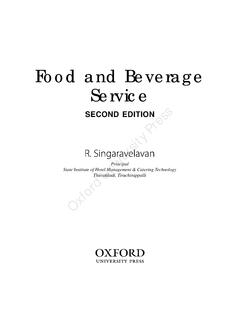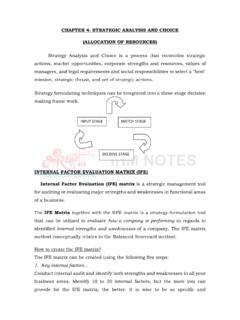Transcription of Profit Maximization vs. Wealth Maximization Objective
1 Profit Maximization vs. Wealth Maximization Objective Profit Maximization Objective (Traditional Approach): The traditional approach of financial management was all about Profit Maximization . Earlier the main Objective of companies was only to make more and more profits. This approach of financial management had many limitations: Limitations of Profit Maximization Objective The term Profit is vague. The term maximum is ambiguous. The time factor is ignored. It does not consider the time value of money. It ignores the risk factor. Business may have several other objectives other than Profit Maximization . Companies may have goals like: a larger market share, high sales, greater stability and so on. The traditional approach did not take into account these aspects.
2 Social Responsibility is one of the most important objectives of many firms. Big companies make an effort towards giving back something to the society. They use a certain amount of the profits earned for social causes. It seems that the traditional approach did not consider this point. Wealth Maximization Objective (Modern Approach): Modern Approach is about the idea of Wealth Maximization that removes all the limitations of the Profit Maximization Objective . Wealth Maximization involves increasing the Earning per share of the shareholders and to maximize the net present worth. Wealth means net present worth which is the difference between gross present worth of some decision or course of action (capitalized value of the expected cash benefits) and the investment required to achieve these benefits (original cost).
3 The Wealth Maximization approach is concerned with the amount of cash flow generated by a course of action rather than the profits. Any course of action that has net present worth above zero creates Wealth should be selected. The goals of financial management may be such that they should be beneficial to owners, management, employees and customers. These goals may be achieved only by maximizing the value of the firm. Elements of Wealth Maximization : The elements involved in Wealth Maximization of a firm are as follows: 1. Increase in Profits A firm should increase its revenues in order to maximize its value. For this purpose, the volume of sales or any other activities should be stepped up. It is a normal practice for a firm to formulate and implement all possible plans of expansion and take every opportunity to maximize its profits.
4 In theory, profits are maximized when a firm is in equilibrium. At this stage, the average cost is minimum and the marginal cost and marginal revenue are equal. A word of caution, however, should be sounded here. An increase in sales will not necessarily result in a rise in profits unless there is a market for increased supply of goods and unless overhead costs are properly controlled. 2. Reduction in Cost Capital and equity funds are factor inputs in production. A firm has to make every effort to reduce cost of capital and launch economy drive in all its operations. 3. Sources of Funds A firm has to make a judicious choice of funds so that they maximize its value. The sources of funds are not risk-free. A firm will have to assess risks involved in each source of funds.
5 While issuing equity stock, it will have to increase ownership funds into the corporation. While issuing debentures and preferred stock, it will have to accept fixed and recurring obligations. The advantages of leverage, too, will have to be weighed properly. 4. Minimum Risks Different types of risks confront a firm. "No risk, no gain" - is a common adage. However, in the world of business uncertainties, a corporate manager will have to calculate business risks, financial risks or any other risk that may work to the disadvantage of the firm before embarking on any particular course of action. While keeping the goal of Maximization of the value of the firm, the management will have to consider the interest of pure or equity stockholders as the central focus of financial policies. 5.
6 Long-run Value The goal of financial management should be to maximize long run value of the firm. It may be worthwhile for a firm to maximize profits by pricing its products high, or by pushing an inferior quality into the market, or by ignoring interests of employees, or, to be precise, by resorting to cheap and "get-rich- quick" methods. Such tactics, however, are bound to affect the prospects of a firm rather adversely over a period of time. For permanent progress and sound reputation, it will have to adopt an approach which is consistent with the goals of financial management in the long-run. Advantages of Wealth Maximization : Wealth Maximization is a clear term. Here, the present value of cash flow is taken into consideration. The net effect of investment and benefits can be measured clearly ( quantitatively).
7 It considers the concept of time value of money. The present values of cash inflows and outflows help the management to achieve the overall objectives of a company. The concept of Wealth Maximization is universally accepted, because, it takes care of interests of financial institution, owners, employees and society at large. Wealth Maximization guides the management in framing consistent strong dividend policy, to earn maximum returns to the equity holders. The concept of Wealth Maximization considers the impact of risk factor, while calculating the Net Present Value at a particular discount rate; adjustment is made to cover the risk that is associated with the investments. Criticisms of Wealth Maximization : The concept of Wealth Maximization is being criticized on the following grounds: The Objective of Wealth Maximization is not descriptive.
8 The concept of increasing the Wealth of the stockholders differs from one business entity to another. It also leads to confusion in and misinterpretation of financial policy because different yardsticks may be used by different interests in a company.









